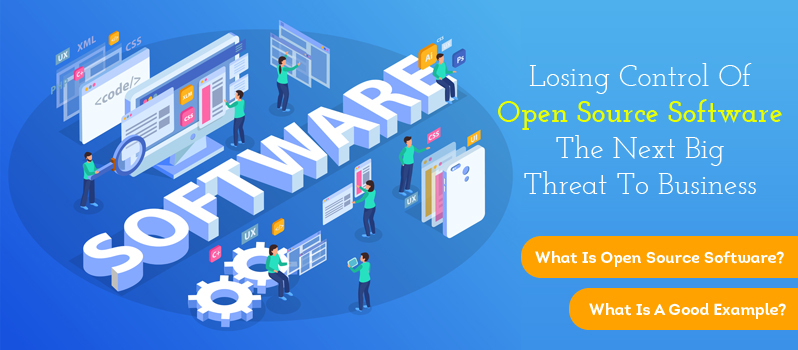Open-source software is software for which the source code is available for anyone to see, use, and modify. For years, it has been a popular way for developers to share their work with other programmers in order to gain feedback. It is also seen as a way for companies to get better at what they do by collaborating with their competitors. Recently, however, some have begun to worry that the software’s openness could be a threat to business – and not just because of piracy.
What Is Open Source Software?
Open source software is software that is freely available for anyone to use, modify, and distribute. This type of software is often developed in a collaborative way by a community of developers who work together to improve the code.
While open source software can be a great asset for businesses, it can also pose a serious threat. When businesses rely on open source software, they are essentially giving up control of that software to the community of developers who maintain it. This can lead to security vulnerabilities and other risks.
For example, a recent study found that nearly 60% of all open source projects have at least one security vulnerability. And because open source software is often used in mission-critical applications, these vulnerabilities can have severe consequences.
Businesses need to be aware of these risks when using open source software and take steps to mitigate them. Otherwise, they could find themselves in a situation where they have little or no control over the software they rely on – with potentially disastrous results.
What Is A Good Example?
The term “open source” refers to software that is freely available for anyone to use, modify, and distribute. While this type of software has many benefits, it can also pose a significant threat to businesses that rely on proprietary software.
One of the main dangers of using open source is the loss of control over the code. Unlike proprietary software, where the code is owned and controlled by a single entity, open source software is developed by a community of developers. This can make it difficult for businesses to track down and fix security vulnerabilities or bugs.
Another problem with open source software is that it can be difficult to keep up with the pace of development. Open source projects are often released on a rapid schedule, which can make it hard for businesses to keep up with the latest versions. This can lead to outdated software that is no longer supported by the community.
Finally, open source often lacks the same level of support and documentation as proprietary software. This can make it difficult for businesses to get started with using the software or to find answers to their questions.
While open source comes with some risks, it can also be a great asset for businesses. When used correctly, open source can provide a high level of flexibility and customization. It can also be a cost-effective way to get started with new technologies.
How Do Open Source Code Licenses Affect Companies?
When it comes to open source code licenses, companies need to be very careful. There are a lot of different licenses out there, and each one has its own set of rules and restrictions. If a company is not careful, they could easily find themselves in violation of a license, which could lead to all sorts of problems.
The first thing companies need to do is make sure they are using the right license for their project. There are many different licenses available, so it is important to choose one that fits the needs of the project. Once the right license is chosen, companies need to be sure they follow all of the rules and restrictions that come with it. If they don’t, they could find themselves in violation of the license, which could lead to all sorts of problems.
One of the biggest problems that can arise from using open source code is that companies can lose control of their software. If a company uses open source code without following the proper licensing procedures, they could find themselves in a situation where someone else owns the rights to their software. This can be a big problem, because it means that the company would no longer have control over what happens to their software. They would also be at risk of losing any customer data that is stored in the software.
Another big problem that can come from using open source code is that companies can inadvertently create security vulnerabilities. If a company uses open source code without properly vetting it, they could end up including security vulnerabilities in
Why Some Companies Fight About Open Source
There are a number of reasons why some companies fight about open source . One reason is that they want to control the software and how it is used. This can be for a number of reasons, such as wanting to keep their trade secrets or wanting to prevent others from using the software for competitor purposes.
Another reason is that some companies view open source as a threat to their business model. They may believe that open source software will make it harder for them to sell their own proprietary software or that it will make it easier for competitors to copy their products.
Finally, some companies may simply be against the idea of open source software on principle. They may believe that open source undermines the intellectual property rights of developers or that it makes it too easy for people to pirate software.
How Can Businesses Protect Themselves From The Threat Of Open Source Software?
Open source software is a double-edged sword for businesses. On the one hand, it can be a cost-effective way to develop and deploy software. On the other hand, it can be a risk if businesses lose control of the code.
There are a few ways businesses can protect themselves from the threat of open source :
1) Keep track of the code changes: It is important for businesses to keep track of all the changes made to the codebase. This will help them identify potential security vulnerabilities and fix them before they are exploited.
2) Use third-party software development tools: There are many third-party development tools available that can help businesses manage their codebases better. These tools can help businesses automate the tracking of code changes and also provide security features that can protect code from being tampered with.
3) Educate employees about open source risks: Employees should be educated about the risks associated with open source . They should know how to identify potential security threats and report them to the proper authorities.
Conclusion
There’s no denying that open source software has become a big threat to business, especially given the recent string of high-profile security breaches. While the benefits of using open source software are many, the risks are becoming increasingly difficult to ignore. As businesses lose control of open source , they become more vulnerable to attacks and data leaks. It’s important to weigh the pros and cons of using open source software before making any decisions, and to always keep security in mind.

